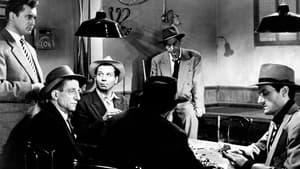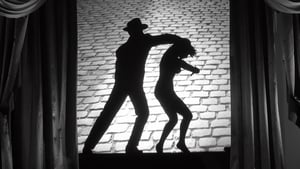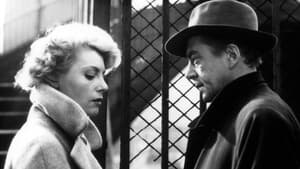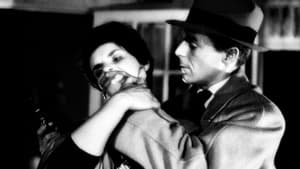Contact: [email protected]
Video Sources 0 Views

Synopsis
[ez-toc]




Introduction
In the vast realm of old films, certain classics transcend their era, capturing the imagination of audiences across generations. One such gem is “Rififi Colorized 1955,” a French adaptation directed by the illustrious Jules Dassin. This crime film, nestled in the heart of film noir, has etched its name in the annals of cinematic history, leaving an indelible mark on the crime and heist film genre.
Read Media File Transfer Agreement: Terms and Conditions
Read FAQ
The Significance of “Rififi Colorized”
“Rififi Colorized” is not merely a film; it’s a cinematic experience that has stood the test of time. Released in 1955, the movie marked a significant moment in the evolution of crime cinema. Its unique blend of suspense, intricate plotting, and shadowy visuals set a new standard for the genre. As a Film Reviewer, it is imperative to provide a brief overview of the film’s historical and cultural impact, exploring why it continues to be relevant even in the context of contemporary cinema.
Jules Dassin: A Maestro Behind the Lens
Central to the success of “Rififi Colorized” is the genius of Jules Dassin, a director whose artistry defined an era. Dassin’s ability to navigate the nuances of storytelling within the constraints of film noir added depth to “Rififi Colorized.” As we embark on this cinematic journey, let’s delve into Dassin’s role in shaping the narrative, understanding how his vision elevated “Rififi” from a mere crime film to a timeless masterpiece.
French Adaptation and Its Narrative Impact
“Rififi Colorized” is not a standalone piece; it is part of a broader narrative that weaves through the rich tapestry of French cinema. The film’s adaptation from its original source material brought forth a unique blend of storytelling elements, giving it a distinctly French flavor. This section aims to unravel the layers of the French adaptation and its influence on the overall narrative and style of “Rififi Colorized.”
Unveiling the Shadows: Film Noir in “Rififi”
The term “film noir” encapsulates a genre characterized by its dark themes, moody visuals, and morally ambiguous characters. “Rififi Colorized” is a quintessential example of film noir, a cinematic gem that embraced the shadows to tell a compelling story. This section aims to demystify the essence of film noir within the context of “Rififi Colorized,” explaining its relevance and impact on the film’s atmosphere.
The Making of “Rififi Colorized”
Cannes Film Festival and National Board of Review Acclaim
While “Rififi Colorized” has earned its place in the cinematic pantheon, the journey to recognition was not without its challenges. The Cannes Film Festival and the National Board of Review played pivotal roles in acknowledging the film’s brilliance. However, the path to acclaim was paved with hurdles, especially for Jules Dassin, who belonged to the league of blacklisted Hollywood filmmakers during that tumultuous era. This section delves into the highs and lows of the film’s reception, shedding light on the accolades it received and the obstacles faced by the cast and crew.
Blacklisted Hollywood: A Crucible of Creativity
The Hollywood blacklist of the 1940s and 1950s cast a long shadow over the industry, impacting the lives and careers of many talented individuals, including Jules Dassin. As we explore the making of “Rififi Colorized,” it is imperative to discuss the challenges faced by blacklisted Hollywood filmmakers during this era. How did these challenges shape the creative process behind the film, and what lasting impact did they have on the trajectory of Dassin’s career?
The Ripple Effect on Production and Distribution
The repercussions of the Hollywood blacklist extended beyond the creative process, affecting the production and distribution of films. “Rififi Colorized” was not immune to these challenges, and this section aims to unravel how external forces influenced the movie’s journey from conception to the silver screen. By understanding the broader context, readers gain insight into the resilience and determination that characterized the making of “Rififi Colorized.”
Plot Summary and Characters
With the stage set and the background illuminated, it’s time to delve into the heart of “Rififi” – its gripping plot and unforgettable characters.
A Symphony of Crime: Plot Unveiled
The plot of “Rififi” unfolds like a well-composed symphony, each note resonating with tension and intrigue. This section provides a detailed summary of the film, with a focus on the central jewel robbery at Rue de la Paix. As a Film Reviewer, the goal is to guide readers through the intricacies of the narrative, highlighting key plot points that contribute to the film’s enduring appeal.
Jean Servais: The Aging Gangster
At the center of “Rififi” is Jean Servais, portraying the role of an aging gangster navigating the treacherous world of crime. This character analysis delves into the motivations, conflicts, and evolution of Servais’ character, providing readers with a deeper understanding of the emotional core driving the narrative forward.
Carl Möhner: The Safe-Cracker Extraordinaire
A heist film is only as good as its safe-cracker, and in “Rififi,” Carl Möhner’s character takes center stage. This section explores Möhner’s role as the skilled safe-cracker, delving into his motivations, expertise, and contribution to the success of the jewel robbery. By understanding the dynamics between characters, readers gain a comprehensive view of the film’s ensemble cast.
Character Arcs and Emotional Resonance
Beyond the thrill of the heist, “Rififi” weaves a narrative that explores the complex web of human emotions. This segment delves into the character arcs, analyzing how the choices and experiences of the protagonists shape the emotional landscape of the film. By examining the intricate details of each character’s journey, readers can appreciate the depth and complexity that elevates “Rififi” beyond a typical crime film.
The Iconic Heist Scene in “Rififi”
A Cinematic Triumph: The Half-Hour Heist Scene
While every frame of “Rififi” is a testament to cinematic brilliance, the heist scene stands out as an iconic triumph. This segment offers an in-depth analysis of the half-hour sequence, shot in near silence without dialogue or music. By dissecting the technical aspects and innovative ideas employed by the filmmakers, readers can gain a profound appreciation for the mastery behind this pivotal moment in cinematic history.
The Art of Silence: Crafting Tension and Suspense
Silence becomes a canvas in “Rififi,” with the absence of dialogue and music heightening the tension to an almost palpable level. This portion explores how the filmmakers utilized silence as a narrative tool, creating an atmosphere that keeps audiences on the edge of their seats. By examining the art of silence, readers can understand the ingenuity that sets the heist scene in “Rififi” apart from other notable sequences in film history.
Innovation in Heist Cinema: A Comparative Analysis
To truly appreciate the impact of “Rififi,” it’s essential to compare its heist scene with other notable sequences in the history of cinema. This section draws parallels and distinctions, placing “Rififi” within the broader context of heist films. By understanding the innovative ideas that distinguish the film, readers can recognize its enduring influence on the genre.
Recognition, Legacy, and Influence
The Echoes of Acclaim: Rififi’s Enduring Popularity
“Rififi” did not merely capture the attention of critics and audiences upon its release; it echoed through the corridors of cinematic history, leaving an indelible mark. This segment explores the enduring popularity and critical acclaim garnered by the film over the years, examining how its legacy has evolved with time.
Truffaut’s Breathless: A French New Wave Ode
The impact of “Rififi” extends beyond its immediate reception, influencing subsequent French New Wave films. François Truffaut’s “Breathless” stands as a testament to this influence, and this section delves into the connections between the two films. By understanding the ripple effect of “Rififi” on the French New Wave, readers can grasp the cultural and artistic significance embedded in its legacy.
Jules Dassin: A Directorial Luminary
As we unravel the layers of influence, it becomes apparent that Jules Dassin’s directorial prowess played a pivotal role in shaping “Rififi” and its impact on future generations. This section analyzes Dassin’s influence as a director, exploring how his vision transcended the confines of a single film to leave an indelible mark on the cinematic landscape.
The Evolution of Crime and Heist Films
“Rififi” is not just a film; it is a catalyst for change within its genre. This segment traces the evolution of crime and heist films, drawing connections between the classic elements of “Rififi” and the subsequent innovations that shaped the genre. By understanding the film’s contribution to the cinematic tapestry, readers can appreciate its role in shaping the trajectory of an entire genre.
Preserving a Masterpiece: The Criterion Collection Edition
The Criterion Collection: A Revered Platform for Cinematic Preservation
In the world of film enthusiasts, The Criterion Collection stands as a revered institution dedicated to the preservation and celebration of cinematic masterpieces. This section explores the significance of The Criterion Collection edition of “Rififi,” highlighting how it adds a layer of cultural and historical importance to the film.
Bonus Features: Insights into the Filmmaking Process
The Criterion Collection edition of “Rififi” goes beyond the film itself, offering a treasure trove of bonus features. Interviews with Jules Dassin and other key figures provide insights into the filmmaking process, enriching the viewer’s understanding of the creative journey behind “Rififi.” As a Film Reviewer, this section examines the bonus features, shedding light on the hidden gems that enhance the overall viewing experience.
Restoration Efforts: Preserving Cinematic Heritage
The restoration of classic films is a labor of love, ensuring that these cinematic treasures endure for future generations. This segment delves into the restoration efforts behind “Rififi,” exploring how The Criterion Collection has contributed to preserving the film’s visual and auditory splendor. By understanding the importance of restoration, readers can appreciate the dedication required to maintain the integrity of old films.
Criterion Edition Quality: A Cinematic Feast
The Criterion Collection is synonymous with quality, and this section evaluates the overall quality of the edition dedicated to “Rififi.” From the visual restoration to the packaging design, every aspect contributes to the cinematic feast offered to enthusiasts. By providing an in-depth review of The Criterion Collection edition, this section assists readers in making an informed decision about their cinematic journey with “Rififi Colorized.”
Conclusion
Embracing Timelessness: Final Thoughts on “Rififi Colorized”
As we draw the curtains on our exploration of “Rififi Colorized 1955,” the film emerges not just as a relic from the past but as a timeless masterpiece. This section offers final thoughts on the enduring legacy and importance of “Rififi Colorized,” encapsulating the emotions and reflections that arise after immersing oneself in its world.
A Recommendation for Cinephiles
To fellow cinephiles who find solace in the charm of old films, “Rififi Colorized” is more than a recommendation; it’s a cinematic pilgrimage. This section extends a heartfelt suggestion to viewers interested in classic crime and heist films, encouraging them to embark on a journey that transcends time and genre.
Trivia and Lesser-Known Facts: Unveiling Hidden Gems
To engage the curiosity of readers, this concluding segment unveils interesting trivia and lesser-known facts about “Rififi.” From behind-the-scenes anecdotes to hidden gems within the narrative, these tidbits add an extra layer to the reader’s appreciation of the film. As a Film Reviewer, the goal is to foster a deeper connection between the audience and the cinematic masterpiece that is “Rififi.”
In the grand tapestry of cinema, “Rififi Colorized 1955” stands as a testament to the timeless allure of old films. Through this comprehensive exploration, readers are invited to unravel the layers of narrative brilliance, visual mastery, and cultural impact embedded in Jules Dassin’s classic crime masterpiece. As the echoes of “Rififi” continue to reverberate through the corridors of cinematic history, its enduring legacy remains an invitation for cinephiles to immerse themselves in the magic of a bygone era.















